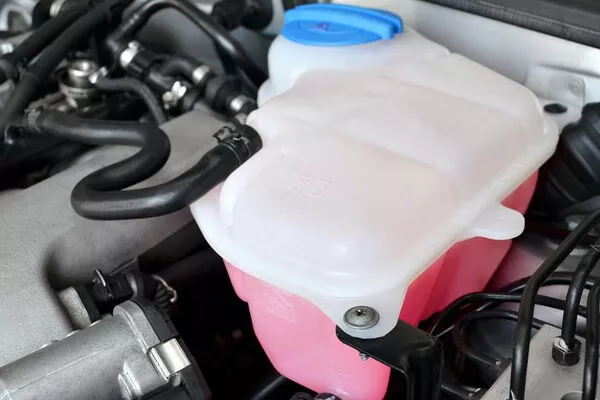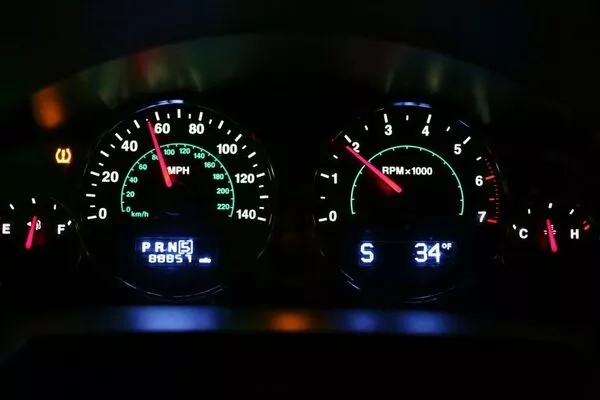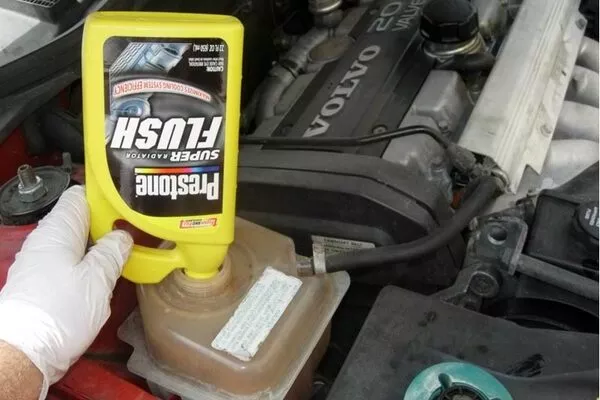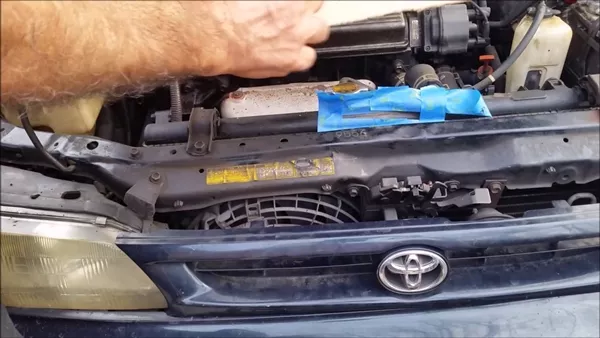Issues with a vehicle’s cooling system most often lead back to the radiator. This is the part responsible for keeping temperatures down so your car doesn’t end up as a charred mess in the middle of the highway.
Radiator issues can lead to expensive part replacements but you can always address the issue before it gets worse. Take a look at the steps prepared by Philkotse.com on how to detect and repair a faulty radiator.
Step 1: Look for signs of leaks
One of the first and surest signs that there is indeed something wrong with your radiator is if there’s a puddle under your vehicle. You will usually notice this if you parked your car in for the night and then went to inspect it the morning after.
A puddle of coolant under your vehicle is usually hard to ignore. You will most probably need to have this fixed before using your car again.
If you do happen to see signs of leaking, you should first make sure that this is really coolant or some other element. Leaks from your car could be engine oil, transmission fluid, and even plain moisture or water. Touch the leaking fluid with your finger or a piece of tissue. Then inspect it thoroughly in sunlight.
- If it’s translucent and odorless, it’s most probably water from the AC.
- It is black, it could be used engine oil.
- If it’s orange or greenish liquid, then that’s most likely coolant.

If the leak is orange or greenish liquid, then that’s most likely coolant
>>> Read more: Basic care tips for car radiator that every driver should know.
Step 2: Check the coolant tank
If you checked the leaking fluid and confirmed that it is indeed coolant, you should check the coolant reservoir under the hood in your engine bay. A lot of fluid reservoirs in your engine have lines or marks on the container to indicate the need to refill.
Check the coolant level on your reservoir and don’t be afraid to top it off with coolant and water mixture if it’s way below the full level.
Check the reservoir again after a few days when it is roughly the temperature the last time you checked it. Coolant stays in the engine assembly to cool down the engine parts when they move, so seeing the coolant level drop dramatically could definitely mean there’s a leak.

Check the coolant reservoir under the hood in your engine bay
Step 3: Note the temperature gauge
Another sign that your engine is low on coolant is when your temperature needle goes up. The coolant’s job is to cool down the engine assembly so it doesn’t wear out when the vehicle is in use. If there is something wrong with the radiator, then the coolant is bound to leak from it.
This will then result in the engine assembly heating up, as detected by your temperature gauge. If your vehicle seems to be running warmer than usual, you may need to take a closer look under the hood.
If you don’t know what a temperature gauge looks like, check your manual. It should indicate every meter and gauge on your dashboard and what they’re for.
Coolant can eventually “spoil” or go bad if it’s been in your radiator for too long. If your coolant level is still high and there seem to be no leaks under the vehicle, then you may have to throw away the current coolant in your radiator and have it replaced.
>>> Related: 3 symptoms of a bad radiator cap & replacement cost

Your engine is low on coolant is if your temperature gauge indicates that your engine assembly is hot
>>> Also check: The Safest Way on How to Put Water in a Car Radiator & Other Essential Facts.
Step 4: Allow your engine to cool down
Before you repair your radiator, have it drained and cleaned. Make sure that the engine is cool enough for you to touch before proceeding further. If you still feel hot fumes coming from the hood without even touching it, then your car may need to sit for a few hours.
Opening your car and its parts while they’re still hot won’t only burn you, it could also cause a serious amount of damage to your vehicle. Also, opening the coolant reservoir while it’s still hot might make boiling coolant spew out -- very dangerous if there are kids and pets around.

Make sure that the engine is cool enough for you to touch before proceeding further
Step 5: Flush the radiator
Locate your vehicle’s petcock at the bottom of the radiator under your car. It should be a valve or plug of some kind. Once you find it, put a large container or a dedicated dripping pan under that valve and open it. The coolant should flow out of your radiator without any trouble.
However, you should still be extra cautious since the elements that makeup coolant could have a really bad effect on your skin.
Then, flush the radiator with tap water until there’s no more colored water coming out of the valve at the bottom. Then refill the radiator with standard water and coolant mixture. You can purchase ready-made coolant to avoid mixing the solution yourself. Just pour it into the radiator with the valve close and then turn your engine on.

Refill the radiator with standard water and coolant mixture
>>> Worth reading: Distilled water vs Coolant: Which is the best product for your radiator?
Step 6: Fix the radiator
First, you will need to inspect and, if necessary, replace the radiator cap. These aren’t ordinary caps and they actually play a vital role in keeping your engine in tip-top shape.
Radiator caps allow extra pressure to escape so your cooling system doesn’t get damaged. But the cap can develop grime and become oxidized over the long run. You will need to replace it.
A cap should be available at any auto supply store and is actually quite affordable. Take note, however, that not all radiator caps are made equal so make sure that you ask the sales attendant for help by telling them the year, make, and model of your vehicle.

A cap should be available at any auto supply store and is actually quite affordable
Second, buy a commercial sealant -- also available at the same auto supply store, and are available in different brands and types. You can get whichever you fancy but take note that this isn’t made to be a permanent solution.
Once you get your sealant, you can just pour it into the radiator and turn the engine on. The sealant will then go around the system and seal all possible leaks, temporarily.
For a more permanent solution, you can go ahead and use epoxy. You would first need to locate a visible crack on the exterior of the radiator before you buy one. There are different varieties of epoxy in the market with varying instructions on how to use it. Simply pick one and follow the instructions to apply it on your radiator properly.
Follow Philkotse.com for more useful car maintenance tips and keep your beloved vehicle in healthy condition!
Recent posts
- Get to know engine types and 4 DIY tips to diagnose unhealthy ones Jan 12, 2021
- 10 most popular car engine parts that you should know Aug 09, 2022
- 4 signs of a sick cooling system May 31, 2019
- Auto emergency: Do and Don'ts of fixing a car's stuck gas pedal Oct 16, 2020
- Top 4 essential fluids in your car Mar 09, 2021












